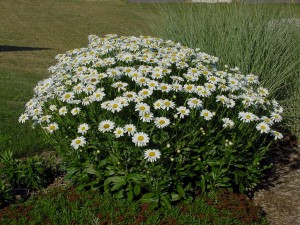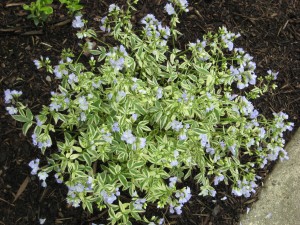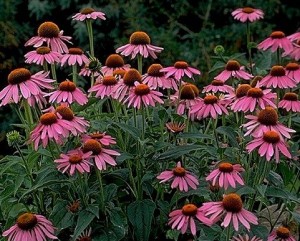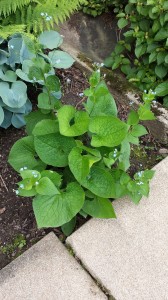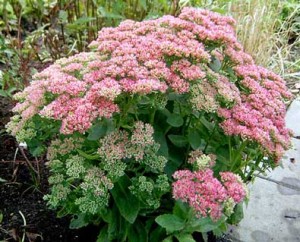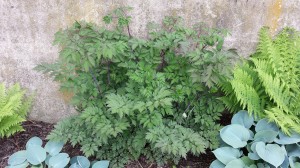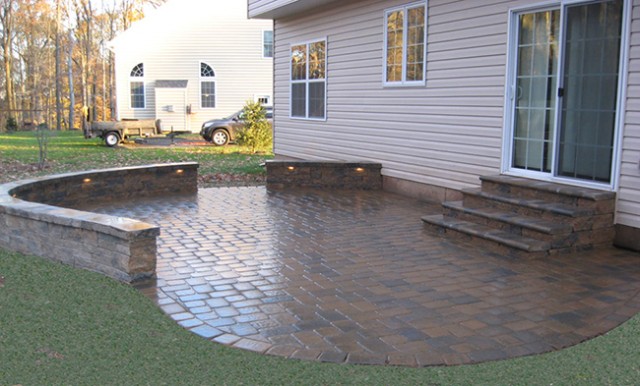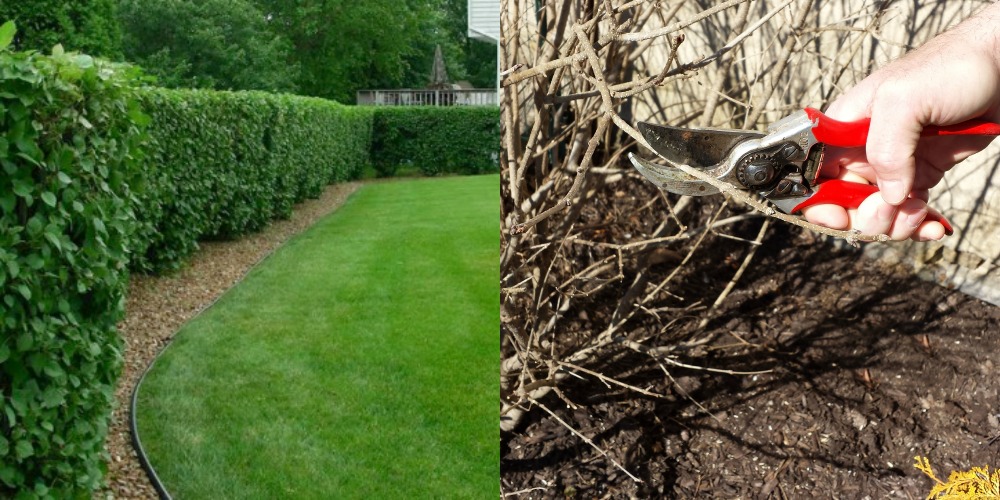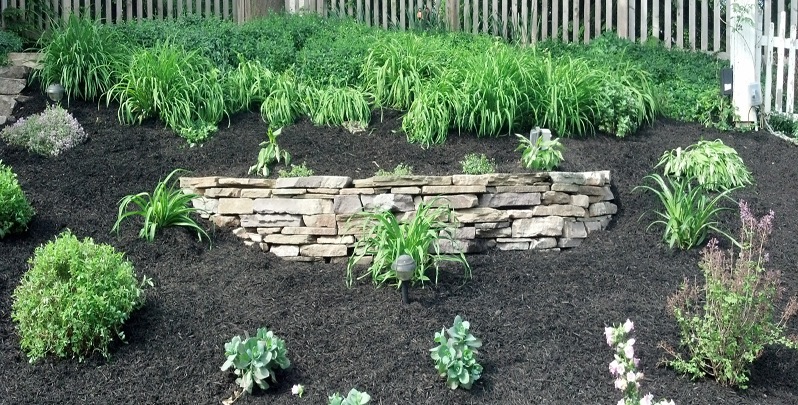Perennials for the Landscape
Perennials can provide many benefits to your landscaping. Since they grow back each year, perennials only need to be planted once. Most perennials are relatively low maintenance. They can be used as border plants, specimen plants or in groups within your landscape beds. Perennials come in a variety of sizes, shapes, colors, and textures. With proper selection, they can provide your landscape with interest all season long. Whether you have sun or shade, there is something for everyone. To help you get started in your selection, here are a few of our favorites.
Leucanthemum ‘Shasta Daisy’
Shasta Daisies are an easy to grow perennial great for borders or grouped together in landscape beds. They grow in a clump and produce flowers with white petals and yellow centers. Bloom time is early summer to fall. They range in size from 2-3 feet tall and 2 feet wide, depending on variety. Shasta Daisies are low maintenance and attract butterflies. They make a great cut flower. Grow best in full sun. Hardy in zones 5-9. Some companion perennials to plant with Shasta Daisies are Purple Coneflower, Bee Balm, and Stonecrop Sedum (tall).
Polemonium ‘Jacob’s Ladder’
Jacob’s Ladder is a clump forming perennial that is nice for shady areas of your landscape. The leaf color ranges from green to variegated. Bloom time is late spring/early summer. Deadhead the plant for repeat bloom. They range in size 12-30 inches high and wide, depending on variety. Grow best in part sun and part shade. Hardy in zones 3-9, depending on variety. Some companion perennials to plant with Jacob’s Ladder are Hostas, Ferns, and Brunnera.
Echinacea purpurea ‘Purple Coneflower’
Purple Coneflower is a perennial native to eastern North America. They grow in a clump and produce flowers that are purple-pink in color. Bloom time is summer. They can reach heights of 2-4 feet. Purple Coneflowers are low maintenance and attract butterflies and birds. They make a great cut flower. Grow best in full sun. Hardy in zones 3-9. Some companion perennials to plant with Purple Coneflower are Black-eyed Susans, Daylilies, and Shasta Daisies.
Brunnera
Brunnera is a clump forming perennial with heart shaped leaves that range in color from green to variegated. Bloom time is spring and the plants produce blue flowers. Brunnera are low maintenance. They work well as a border plant or as a specimen plant in your shade garden. They can reach heights of about 1 – 1 1⁄2 feet. Grow best in part shade. Hardy in zones 3-8. Some companion perennials to plant with Brunnera are Hostas, Ferns, and Bugbane.
Stonecrop Sedum
Sedum is a hardy perennial that comes in varieties that grow low or in a mat-like fashion or varieties that grow in a taller upright fashion. Low growing sedums are great for rock gardens. Taller varieties are nice as specimen plants or grouped together in landscape beds. Sedums are low maintenance, but varieties that grow upright should be divided every 3-4 years to help maintain compact growth. Bloom time is late summer through fall. Grow best in full sun. Hardy in zones 3-9. Some companion perennials to plant with upright Sedums are Ornamental grasses, Daylilies, and Black-eyed Susans.
Cimicifuga (Actaea)‘Bugbane’
Bugbane is a perennial that provides a nice vertical accent to shade gardens. The foliage varies in color from green to deep purple. They produce wands or spikes of flowers that bloom late summer to fall. Flower and leaf color varies depending on the variety. Bugbane will grow to about 4 to 7 feet tall and spread about 2 to 4 feet wide. Grow best in shade to partial shade. Hardy in zones 3-8. Some companion perennials to plant with Bugbane are Hostas, Ferns, and Jacob’s Ladder.
PAVER PATIOS: Function and Design
Paver patios add value to your home by increasing the livable space. However, there are several things that should be considered before installing a patio to ensure the best functional outdoor living space for your home.
Look at the layout of your property and determine your overall goal. Take some time and consider the following questions:
1) Will the size be adequate for your average use? Do you enjoy simple breakfasts for two or do you entertain larger groups?
2) What shape patio will fit the landscape? Do you need to work around structural restraints, such as a basement door? How is the patio going to connect to the house or tie into other landscaping features, such as planting beds?
3) When furnished, will there be enough space for traffic flow? Maybe a seating wall would help to direct the flow of traffic, as well as provide overflow seating for larger parties.
4) Where should the patio pitch to shed the rain water or would a permeable pavement suit the needs better for the site?
5) Do you want to incorporate other features, such as a lighting, a fire pit, or outdoor kitchen?
6) What style and color paver do you prefer? Choose a paver style and color that are complimentary to your home. Don’t be afraid to mix colors or paver styles!
Once you answer these questions, you can begin the design process of your patio. Look through magazines and on line for pictures of patios and patio features that you like. Keep in mind, form follows function, so consider your needs before you implement. With proper planning, you can have an outdoor living space that is not only functional, but is well suited with your personality and lifestyle. The more thought you put into the project, the happier you will be with the end result!
Spring Landscape Maintenance
Early spring is the time to survey your property and attend to the things that have been marked by winter, especially after the winter we have just gone through. Main concern issues would be trimming or pruning of damaged trees and shrubs, the clean-up and mulching of landscape beds and clean-up of debris in turfgrass.
Spring Trimming
Spring trimming and pruning is certainly a task that is necessary for multiple reasons, particularly after harsh, snowy winters. Trimming shrubbery in spring allows for shaping and controlling of plant growth. It will also allow you to redirect plant growth (i.e. away from a walkway or window). Pruning dead and damaged branches from shrubs and trees will let the plant heal quicker and can prevent the entrance of harmful insects and disease. New buds will form and allow the plant to thicken its growth and keep it from appearing lanky or “wild.” With the investment in plant material and the value that they add to your property, it is best to keep them in good health.
Mulching
Besides making your landscape beds look fresh and aesthetically pleasing, mulching has a lot of other benefits. Mulching your landscape beds annually helps to retain moisture in the ground, block weeds from germinating, protect against soil erosion around the plant and insulate plant roots. As it breaks down, mulch adds organic matter to the soil, which adds beneficial nutrients for plants to uptake through their roots. Spring mulching also provides the opportunity to use a pre-emergent herbicide underneath the mulch that helps to keep the weed seeds in the soil from germinating. Weeds can deprive the plant material from nutrients and moisture in the soil.
Lawn Clean-up
Get your lawn off to a healthy start and remove leaves, sticks and other debris left over by winter. Wet and matted leaves left on the lawn can smother and kill the turfgrass plants. Debris on the lawn also interferes with mowing, fertilizing, aeration, and seeding. Snow mold can be another problem in early spring as the snow melts. It is a fungal disease that turfgrass plants can get when there is prolonged periods of snow on the ground. It looks like dead circular patches of matted grass. Usually, light raking of the area solves the problem by increasing air circulation to help with drying of the grass plant and loosening matted grass so new plants can grow. Once dry and actively growing, the turfgrass typically recovers without the need of a fungicide. Spring fertilization will help promote turfgrass growth. In order to prevent weed encroachment, overseeding of your lawn may be needed to help fill in thin areas of turfgrass. A thick lawn is less likely to have many weeds.
Taking care of these issues early in the season, will help your overall landscape thrive for the rest of the year.
Shade Plants
Perennial shade companions for Hostas:
- Brunnera
- Astilbe
- Heuchera
- Ligularia
- Tiarella
April is also the time to evaluate your landscape needs from mulching to pruning to planting.
March Tip
It is time to start thinking about your garden.
Peas and onions can be planted starting in mid-March!
 Houp Landscaping – Enhancing Nature's Beauty
Houp Landscaping – Enhancing Nature's Beauty